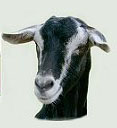|
Getting your first horse or pony
|
Western Pleasure The event of western pleasure evaluates the horse on presentation. It is a western style competition based on manners and suitability of the horse for a relaxed yet collected gait or pace. Slow and steady win this event and it is the only western competition, along with trail class, that does not rely either on speed or agility. Your horse needs to appear “pleasurable” to ride, being very comfortable and smooth, hence where the name resided from. Horses are to move in a slow, light, calm, relaxed manner, with minimal rein contact. Competition mainly resides from light horse breeds in the United States and Canada often in open competition or shows limited to a certain breed. Similar to dog shows, conformation and temperament play a significant role int his event. Animals that are calm, quiet look the part along with having a collected, soft gait (pace) with strong muscling required to sustain slow movement are the most competitive. As far as horse breeds for this event, any breed can partake in western pleasure classes, however, the American Quarter Horse, American Paint Horse and Appaloosa tend to be favored by the judges. Other breeds such as the Morgan horse and Arabian horse can be just as equally competitive due to their natural conformation of a high set neck. Some classes that are limited to one breed may alter the way they judge to accommodate for the use of intermediate gaits other than the jog trot. These breeds would consist of the Missouri Fox Trotter and the Tennessee Walking horse. Some breeds traditionally shown in English riding disciplines, such as the American Saddlebred or the Friesian, may also have individual western pleasure classes that are altered to accommodate their conformation and way of moving.
Competition As a group, riders will travel around the edge of an arena in the same direction. The event judge will command the group to have their horse walk, jog (slow trot) and lope in both directions in the arena. They will also be told to have their horse stand quietly and back up. Depending on the breed, some judges may ask for an extended gaits, such as an extended jog or they may be asked for a hand gallop. The rider can gain a fault from excessive speed or slowness, breaking gait or incorrect head position. The rider must have a deep seat and long stirrups. This is to assist the horse in driving deeply from the rear and elevating the shoulders. Little to no rein contact is best with the reins loose and relaxed. The riders ability and horsemanship, otherwise known as equitation, are not judged but proper position of the rider will help the horse perform better. Equipment Since this is a western event, all tack and attire are western. The horse will carry a western saddle and will wear an open-faced bridle without a nose band. The rider must wear a long-sleeved shirt, sometimes with a vest or jacket, chaps, a cowboy hat and cowboy boots with the option of gloves and spurs. Western pleasure resides heavily on the “look” and appearance of both horse and rider so the tack and attire will likely mimic popular styles in western wear. In other words, the more bling the better. At smaller shows denim jeans are suitable rather than chaps or are worn under chaps. At national or regional competitions, women wear western-styled polyester dress pants that match the rider’s shirt or chaps while men tend to wear jeans. Neck scarfs are commonly worn by both men and women, brooches and necklaces are now seen on female riders in more recent years.
Grooming & Appearence The horse must be clean and presentable showing no signs of dirt or blemishes. Generally bathing the horse prior to the show is done and recommended with legs, bridle path, ears, muzzle and other areas neatly clipped. The grooming details and length of the bridle path vary by breed. As in any fashion or appearance based competition there are fads that come and go. The horses mane is where the most differences will be noticed. Sometimes the mane is shortened, thinned and banded where the mane is divided into smaller pieces where small rubber bands are placed around each segment in order to make the overall mane lay flat and neat. It really depends on the owners preference as to how they present their horse as well as them self. Some breeds such as the Arabian and Morgan, are required to show to show a more natural long unthinned, unbanned, unbraided manes. The horses tails are primarily kept long and naturally flowing in basically all breeds. Some times artificial tails and tail extensions are used and allowed in competition. Similar to human pageant competitions beauty enhancers are used to get a step ahead of the competition, but just like the natural mane look of the Arabian and Morgan horses, artificial tails are band from competition.
Horses | Ponies | Horseback Riding | Riding Styles | Riding History Horse Types | Breeds From A-Z | Color and Markings
|
||||
|---|---|---|---|---|---|
The Material contained herein may not be reproduced without the prior written approval of the author. Contents & Graphics Copyright © Horses With Amie (C) 2006-. All Rights Reserved. Our work is not Public Domain. |

